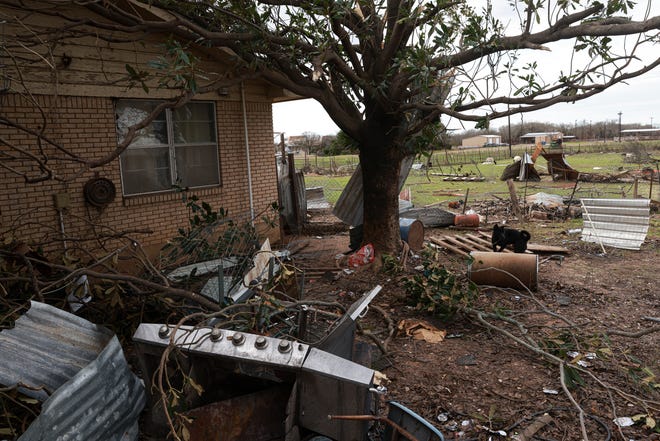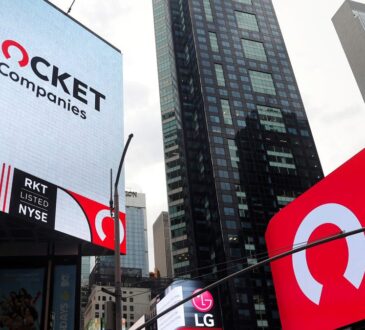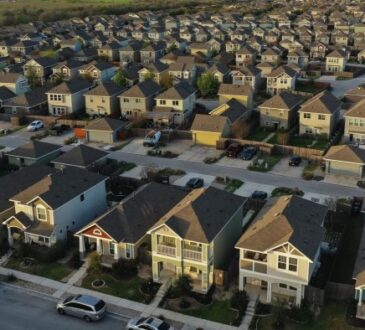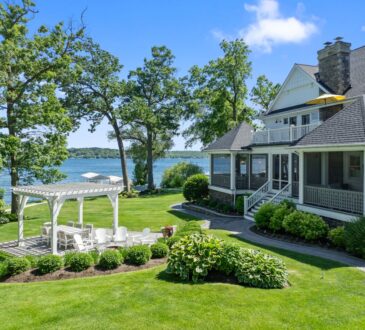
More than 6 million homeowners nationwide – including a large number of Native American, Hispanic and Black homeowners – do not carry homeowners insurance, putting them at extreme risk in the event of natural disasters or other significant damage to their homes, a new study has found.
The study by the Consumer Federation of America found that uninsured property accounts for 7.4% of all properties in the country and leaves $1.6 trillion in property value unprotected.
“Being uninsured poses a potential threat not only to individual homeowners but also to communities and our national housing stock,” the Consumer Federation of America said in “EXPOSED: A Report on 1.6 Trillion Dollars of Uninsured American Homes.”
“Being uninsured can foster deeper economic precarity for millions of homeowners across the country, especially those with lower incomes, and it is an important contributor to racial inequality,” the report said. “Inequalities in who has homeowners insurance will likely widen the long-standing racial wealth gap, as uninsurance disproportionately impacts Hispanic, Black, and Native American homeowners. Over time, insurance access is likely to become a key decider of who can fully reap the benefits of homeownership, including maintaining their home and building wealth.”

Findings in the study, which was an analysis of 2021 American Housing Survey data from the U.S. Census Bureau, included:
Learn more: Best home insurance
- One in 13 American homeowners are uninsured – approximately 7.4% – living in about 6.1 million homes.
- Homeowners earning less than $50,000 per year are twice as likely to lack insurance compared with homeowners in general. Among lower-income homeowners, 15% are without coverage.
- Certain demographics of homeowners are disproportionately at risk: 22% of Native American homeowners, 14% of Hispanic homeowners, and 11% of Black homeowners have no insurance.
- 35% of owners of manufactured homes and 29% of homeowners who inherited their homes lack coverage.
- Rural homeowners, those living in the metropolitan areas of Houston and Miami, and homeowners in Mississippi, New Mexico, and Louisiana are most likely to not have insurance.
- In 2021, homes with an estimated $1.6 trillion in property value lacked coverage. This includes $339 billion of uninsured Hispanic-owned homes and $206 billion of uninsured Black-owned homes.
“Many consumers are struggling to afford rising premiums and must go without homeowners insurance,” said Sharon Cornelissen, the Consumer Federation of America’s director of housing and co-author of the report. “That puts them at risk of losing everything. One storm or wildfire means they have to go into deep financial debt to repair their home, live with unsafe and inadequate housing, or even become homeless.”
Most expensive places to live:Which US county has the highest home prices? Graphics and maps explain
Homeownership on the rise:What’s behind the spike among Asian American, Hispanic home ownership?
What can be done?
In its report, the Consumer Federation of America made several recommendations. They include:
- State insurance regulators should collect more data to track homeowners insurance gaps and inequalities in insurance markets. Despite decades of proposals, regulators have consistently failed to collect granular and timely data needed for research, and so information and analysis about homeowners insurance is in its infancy.
- Problems in the homeowners insurance market pose a systemic threat to housing markets, and solving them will require extensive investments in mitigation. States and the federal government need to substantially increase investments in community risk reduction, home fortification and loss mitigation, and develop strategies to reduce insurers’ overreliance on unregulated, global reinsurance. That is the coverage that insurance companies purchase to offload some of the risk they assume for their policy holders.
- Regulators should collect more information about racial homeowner insurance gaps. Historical research into racial discrimination in insurance markets has demonstrated the broad incidence of insurance “redlining,” similar to the denial of mortgages in Black and Hispanic communities. Insurance companies have not been held accountable for this. More research should be done, and regulators should use existing Fair Housing laws to investigate these gaps, and if needed, to correct them.
“When millions of American families simply cannot find or cannot afford insurance coverage for their home, we are all exposed,” said Douglas Heller, the organization’s director of insurance. “Not only are uninsured families unprotected, but the economic fabric of entire communities is also at risk if significant portions of residents cannot rebuild after a disaster. Our study should be a wake-up call for lawmakers, insurance and housing regulators, and the nation’s emergency management agencies.”
Additional listing:Realtor.com adds climate change risk features; 40% of US homes show risks of heat, wind, air quality
Betty Lin-Fisher is a consumer reporter for USA TODAY. Reach her at blinfisher@USATODAY.com or follow her on X, Facebook or Instagram @blinfisher. Sign up for our free The Daily Money newsletter, which will include consumer news on Fridays,here.




